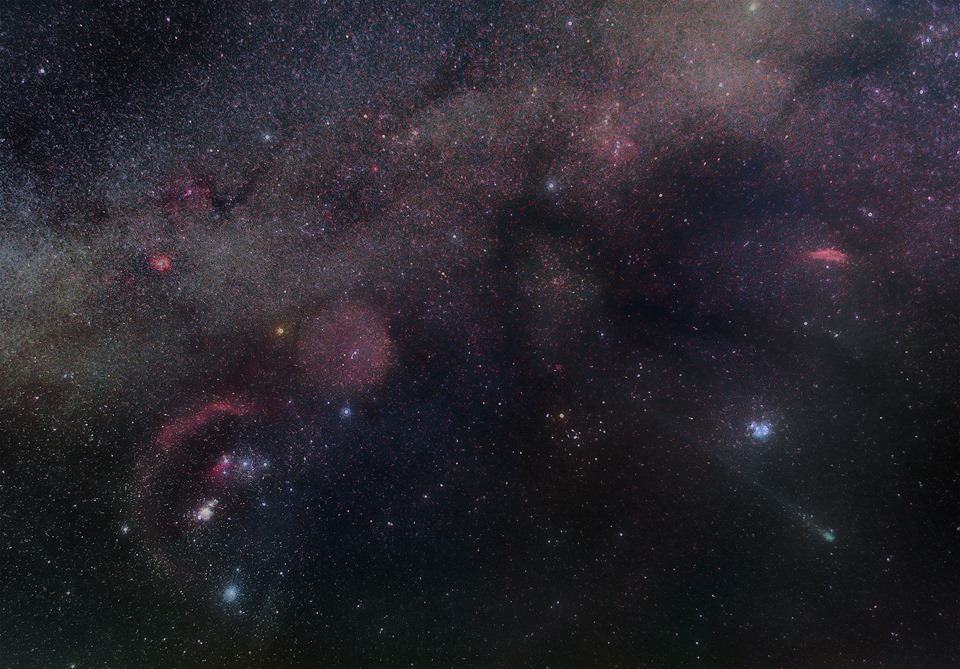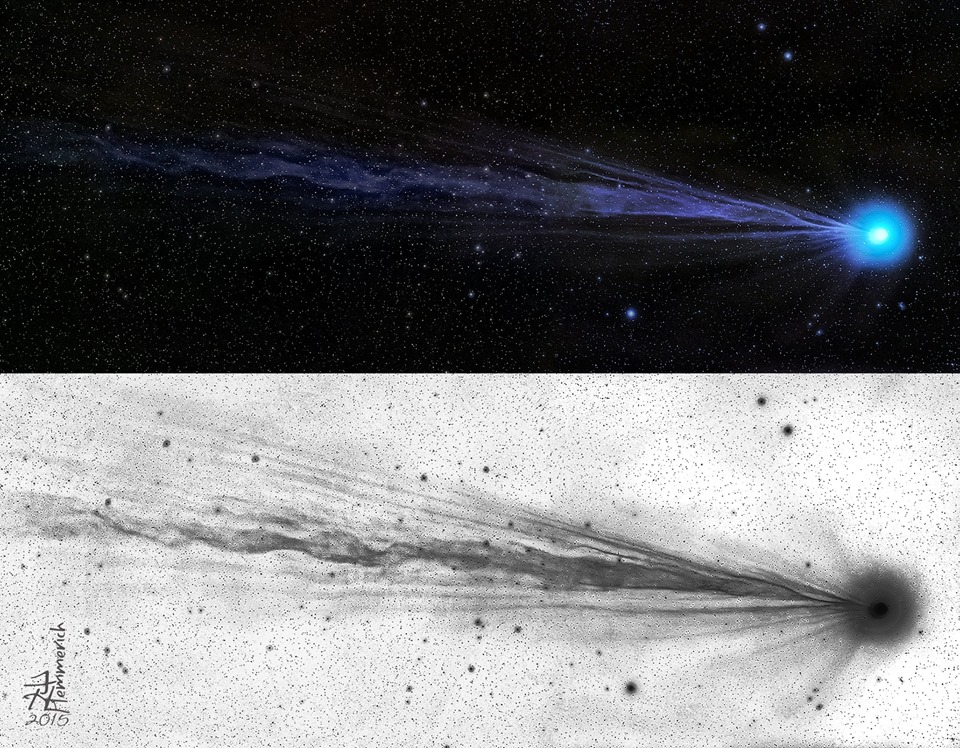Interview 3: DSLR astrophotography with Fritz Helmut Hemmerich
 If you are an astrophotograhy enthusiast and are on Facebook you will know Fritz and his outstanding photography work. Being situated on Tenerife and having his own observatory and a travel kit to go up the vulcano to go above the clouds, he seems to be able to output new material almost on a daily basis. And amazing output that is. With the ideal combination of dark skies, excellent equipment and outstanding photography and processing skills, he amazes us with many of his photo’s. Especially with the comet LoveJoy making a nice display in our skies, Fritz is entertaining us all with lot’s of excellent imagery of the comet and it’s tail.
If you are an astrophotograhy enthusiast and are on Facebook you will know Fritz and his outstanding photography work. Being situated on Tenerife and having his own observatory and a travel kit to go up the vulcano to go above the clouds, he seems to be able to output new material almost on a daily basis. And amazing output that is. With the ideal combination of dark skies, excellent equipment and outstanding photography and processing skills, he amazes us with many of his photo’s. Especially with the comet LoveJoy making a nice display in our skies, Fritz is entertaining us all with lot’s of excellent imagery of the comet and it’s tail.
It is about time to get to know Fritz and his passion for astrophotography a bit better.
In Astrophotography we realise the integration of time through the collection of light. And what comes out of this integration? Color, shape and eventually; beauty.

What got you interested into astronomy in general and astrophotography in particular? How long ago was this?
I started on my 15th birthday with astronomy. That is now for 46 years.
Our physical existence is small in relation to the fact that our world becomes larger every century: beginning with a world until the horizon, to the moon, the sun and the planets in the glass spheres, to the local Galaxy Milky Way and at last to today’s incredibly wide infinity. Our human mind can penetrate such spaces as opposed to the smallness of the body. And also in respect to time our lifespan seems to be very little in comparison to the cosmic dimensions. In Astrophotography we realise the integration of time through the collection of light. And what comes out of this integration? Color, shape and eventually; beauty.
What do you like/love the most about this hobby?
The silence of the night. The attention, patience and concentration, but also the challenge of constantly learning something new. And last but not least, the echo and the connection with the people who see and enjoy my pictures.
What was your first camera and other gear (scope/lenses) you used for astrophotography?
My first telescope was a self-made Newton reflector of 4 inches, 46 years ago. I took some basic photos with an old 6×6 camera from Zeiss. The first attempts were star trails, stabbing the endpoints of the tracks depending on the thickness of the trails with a needle, illuminating this photographic paper in the lightroom and – behold, I could identify the constellation Orion with a fairly realistic size of stars according to their known magnitude.
What gear and camera are you using right now?
In such a long time, a lot of things accumulate. I mostly use my HyperStar 14 inch, the 12 inch Ritchey-Chretien, my Borg 125mm Apo refractor and a Canon 1.8 / 200mm telephoto lens. My new favorite camera is the Sony A7s, modified by CentralDS. But I’m also using more or less the monochrome Atik 460EX and the color Atik 490EX. I own an adaptive optics from starlight Xpress, I’m just learning to use it properly.
Do you have a specific reason to use a DSLR for astrophotography? If so, which?
I have some experience with Canon DSLR, since about 1996, when I made beautiful pictures of a lunar eclipse with the than current Canon. Later I had a 600D, 60D and 5D-Mark III. I have sold them all again. I think the banding noise of the Canon cameras is too disturbing. Nevertheless I’m attracted by the large sensors and the fine resolution of the DSLR. For several months I have now been working with a Sony A7s. Log2S curve, high dynamic range up to ISO 5000, low noise, and a 4K video mode: For me, this camera fulfilled a dream.
What is your favorite image you made?
That’s very hard to say. One of the first captures with the then brand new Sony A7s from the Orion Nebula is what I still like very much. But even some snapshots of recent comet Lovejoy (C2014/Q2) are still inspiring me.
What is your favourite subject to photograph?
Widefield and Nebulae.
What skies are you used to where you do your astrophotography?
I’m living in a remote area in Tenerife in 1200 meters altitude. There is no light pollution. We produce our own solar energy. We have an observatory in the garden of our home. But we also reach the caldera of Teide volcano in 2400 m altitude within 20 minutes.
Which software do you use for processing?
PixInsight, Fitswork, Straton, DxO10, Photoshop CS6
What is unique about your photos, what distinguishes your work from others
I don’t know.
Editor: The dedication of Mr Hemmerich is what makes him stand out from the crowd. Both in quality of the images and the amount he manages to produce.
What are the common pitfalls you see other people doing?
What bothers me are the many images in which one mixes own material with the publicly available materials of Hubble Space Telescope, Subaru etc.
Often I notice that the proportions of astronomical objects are not artistically brought into the picture.
I still see very often use the brush tool from Photoshop.

Do you have tips and/or suggestions for our readers?
Invest a lot of money in a good mount. Meet and learn in a permanent learning process the details of the image processing. Camera and telescope are secondary for a long time. Search for valuable critics and have always a jealous-free glance at the best of the community.
What is your experience with the Sony A7s;
According to technical specs like from DxO it’s not as great as it seems to be perceived by the community. Smart marketing or really a great camera?
I could directly compare a cooled Canon 5DMarkIII and a cooled Sony A7s, both of CentralDS: I can not really compare them. These are two worlds. With a huge distance between them. Although the specifications of DxO didnt show a significant difference in the pure measures, in the practice of everyday life it differs between effort (Canon) and joy (Sony).



Somewhere I saw an ad for a set of rings to mount on telephoto lenses to aid focusing and to lock the focus. Do you know where I can find such a device?
Try searching for Bahtinov mask?